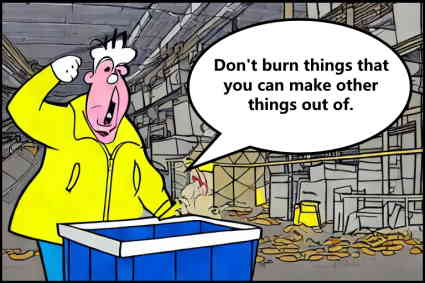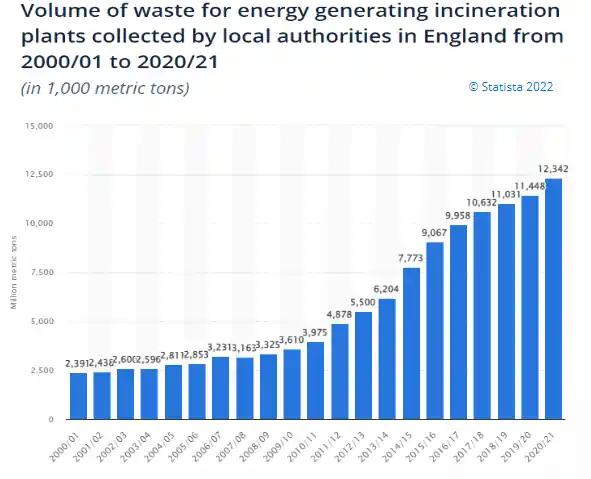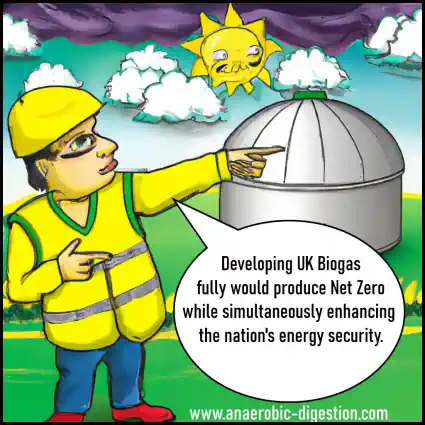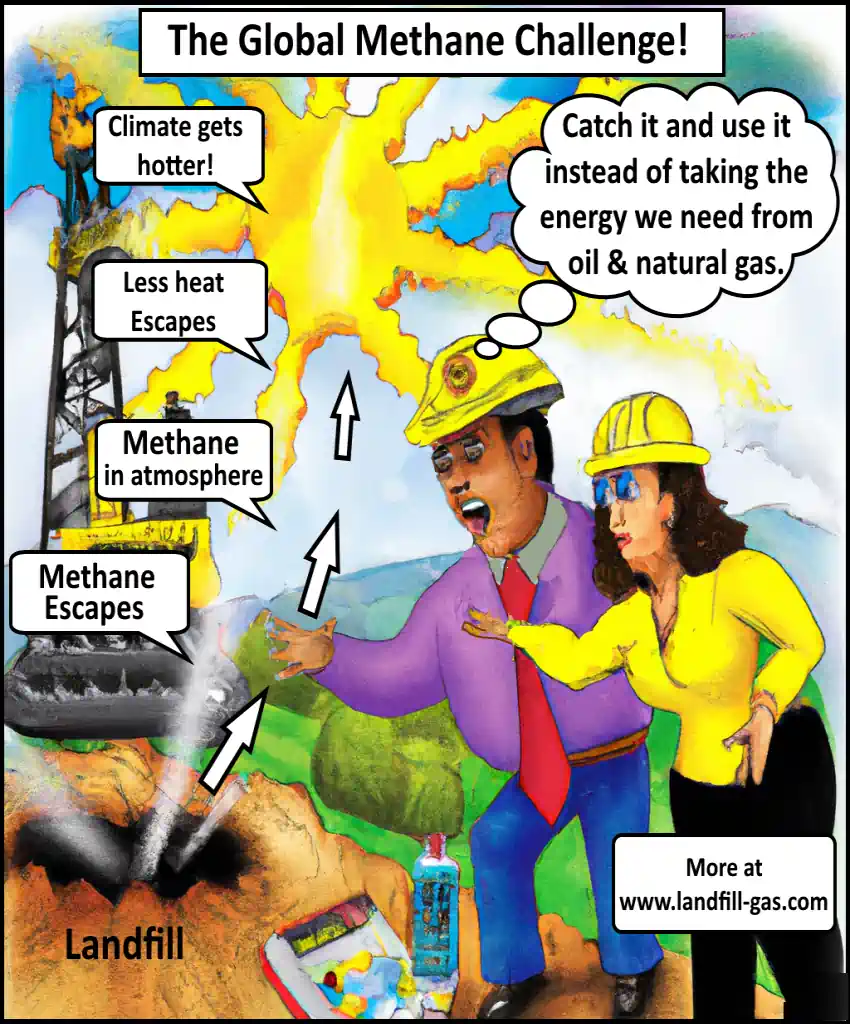UK Energy Security is woefully inadequate and the consensus is that we need to generate more energy in the UK, so why not use our waste to generate more energy?
The UK needs urgent action, and not just be looking to use energy from waste as a way to reduce reliance on fossil fuels. It's time to invest more!
The UK has an enormous amount of waste.
The amount of waste we create and throw away every year is estimated to be in the hundreds of millions of tonnes. That’s why the government is pushing to reduce this amount. One way we are doing this is by using our own resources many times over. It's called recycling. Recycling is a great way of keeping costs down both financially and environmentally.
Waste incineration is a way of disposing of waste that has gained traction in recent years. It is a way of producing energy from waste in a process known as Energy from Waste (EfW). It is called “energy recovery” and it is a form of low-priority recycling, only to be applied when other types of recycling have proved impossible.
Some Important Facts About 5 Ways to get Energy from Trash
 Energy recovery is the process of recovering value from materials where high-quality compost or recycling has already been removed and if a better use for the material cannot be found.
Energy recovery is the process of recovering value from materials where high-quality compost or recycling has already been removed and if a better use for the material cannot be found.
Waste can be converted into energy in a number of different ways, including:
- Incineration (combustion)
- Pyrolysis
- Gasification
- Anaerobic digestion
- Landfill gas recovery.
Each of these generates products that can be used to make electricity as well as products that are unique to the process.
This is a brief overview of the fundamentals of energy from waste, beginning with municipal waste incinerators.
1 – Incineration (Combustion)
Waste is heated to about 850 degrees Celsius with an excess of oxygen present to power a boiler, which produces steam that drives a turbine to generate electricity. Metals are extracted using magnets; other residues include bottom ash and air pollution control residues (fly ash).
Heat is also created, which can be used locally if the plant is located near a building that can benefit from the heat. The calorific value of the materials used to feed the incinerator will determine the amount of energy generated.
The Best Incinerators Don't Just Make Electricity
Incinerators are a common facility in the UK, with approximately 2.5% of the total net UK electricity generation of 307,556 GWh (2020/21) coming from incinerators.
The UK is still relatively new to this. It is called EfW technology. It is still in the early stages of development for the UK relative to most of Europe.
District Heating Systems Fed Hot Water from Incineration
District heating systems use the heat from a central source such as a power station, EfW plant or gas boiler to produce hot water that is piped to buildings.
More than half of the UK’s heat could are met through district heating.
District heating is one of the most efficient ways to meet heating needs, reducing emissions and increasing energy efficiency. It's a great way to reduce your energy consumption and save money.
Some of the domestic heat requirements of the UK are met by district heating plants, a few large ones supply heat and hot water to almost 8,000 homes. But in fact, only a small number of the UK’s district heating plants are designed to supply heat for domestic purposes.
Raising this number could make a useful contribution to energy security by reducing reliance on imports of natural gas.
EfW Plants – Also Known as Incinerators
If EfW plants are used to supply heat to district heating systems, they need to be located near urban areas which are the main source of the input waste fuel. As EfW plants need to be located near urban areas, they are also well-located to meet domestic waste disposal requirements in those areas.
The UK's waste strategy has a prioritisation of waste reduction, recycling and then recovery. However, particularly if heat offtakes from energy from waste (EfW) are developed, it has an important role in reducing the UK's dependence on gas.

EfW is a vital part of the puzzle in the race to reach net zero. It needs to be developed rapidly as a matter of government policy, but so far throughout 2022 has failed to receive even a mention by our politicians.
2 – Pyrolysis
Treatment at high temperatures, typically 800 to 1300°C, though lower temperatures can be achieved.
Organic materials are separated chemically and physically into different molecules. Thermal decomposition) results in the formation of various products such as:
- pyrolysis oil,
- syngas, and
- char.
The composition and yields of each are temperature-dependent. Typical applications include the conversion of wood biomass into biochar, which is then used as a soil nutrient; and the generation of electricity.
Other applications include:
- plastics to oil;
- combined heat and power;
- aluminium: where foils are combined with other materials, such as plastics Because the organic fractions are decomposed during the pyrolysis process, the aluminium foil remains intact and can be recovered and reused.
3 – Gasification
Gasification is the process of converting organic materials at high temperatures and pressures (above 700°C) without actual combustion. It employs a controlled amount of air and steam in direct contact with the feedstock.
Syngas and ash are among the products. The syngas can be converted into electricity, fuels, and chemicals.
4 – Digestion by Anaerobic Bacteria

In the absence of oxygen, bacteria are used to break down organic feedstocks. The process can produce varying yields of biogas and digestate depending on the feedstock and other parameters.
The biogas can be burned to generate electricity and heat, or it can be further processed to be used as a renewable natural gas or a transportation fuel.
The digestate can also be processed further and used as a biofertilizer (this may remain a waste material depending on the treatment process).
5 – Recovery of Landfill Gas
To protect the environment and human health, landfill gas from a landfill site must be properly controlled. As part of a site's landfill gas control measures, the gas can be collected in a separate system and used to generate renewable energy.

Gas quantity and quality are both critical for the treatment process. The collected gas is burned in a combustion engine. It will need to be pre-treated to remove impurities, condensate, and particles before it can be used to generate electricity for the national grid.
Conclusion
The UK is facing an energy security crisis. The country is increasingly reliant on imported energy, and there are concerns about the stability of the energy supply. The government is looking for ways to increase energy security, and one option is to use waste to create energy.
There are a number of ways that waste can be used to create energy. One option is to use waste as a fuel source for power plants. This would reduce the need for imported energy, and would also provide a source of energy that is not subject to the fluctuations of the international market.
Another option is to use waste to create biogas. This gas can be used to power vehicles, and can also be used to generate electricity.
Here are five of the best ways that the UK is using waste to create energy:
1. Burning household waste in incinerators to generate electricity
2. Converting food waste into biogas
3. Collecting methane from landfill sites
4. Using sewage sludge to generate electricity
5. Converting waste plastics into fuel.








There is so much nonsense in this blog it’s hard to know where to start, but let’s try:
1. Incineration (or combustion) is expensive and inefficient,producing more greenhouse gases per KwH than a coal power station.
2. It is not and never has been a form of recycling, coming at the bottom of the waste hierarchy along with landfill.
3. Incineration is unreliable (the Ardley incinerator failed to produce any electricity for one year thanks to a turbine failure).
4. District heating systems attached to incinerators are expensive (ask the people in Nottingham), unreliable (ask the people in Lerwick) and take decades to break even (ask the people in Sutton). Siemens say district heating from ground source heat pumps is 6 times more efficient.
5. No pyrolysis or gasifier used for mixed household waste has worked for more than a few days at a time and there have been (and continue to be) many financial failures after the grant funding runs out.
6. There is already incineration over-capacity in the UK which depresses recycling rates. (See the annual reports by respected consultant Tolvik).
7. The Climate Change Committee warns against building more incinerators and says plans should be made for them all to be fitted eventually with carbon capture and storage. But CCS is hugely expensive money-wise and energy-wise and does not capture all the CO2.
8. Anaerobic digestion is a worthwhile damage limitation exercise to recover energy from food waste, but more energy is saved by not wasing that food in the first place.
9. A report for Zero Waste Europe shows that EfW would make a minimal contribution to Europe’s energy security. See http://www.zerowasteeurope.eu.
10. For detailed analysis of the impact of EfW in the UK,go to http://www.ukwin.org.uk
Well, isn’t this just another example of the same old, tired thinking from the establishment? The idea of relying on waste to generate energy is nothing more than a desperate attempt to appease the green lobby and avoid addressing the real issue at hand.
We should be focusing on securing our energy future through robust and reliable means, not pinning our hopes on garbage. It’s astonishing that they’re trying to sell us on the idea of waste incineration as some sort of environmentally friendly solution.
And let’s not forget that recycling is hardly the silver bullet they make it out to be. It’s a costly and often inefficient process that fails to address the root causes of waste generation.
Instead of these half-baked ideas, we need to invest in our own domestic energy production, including exploring our own natural resources, and not continue to rely on foreign imports. It’s time to put the interests of the British people first, not virtue signal to the green agenda.